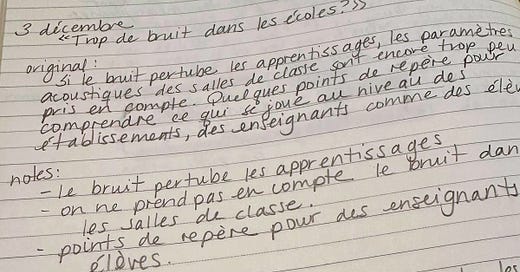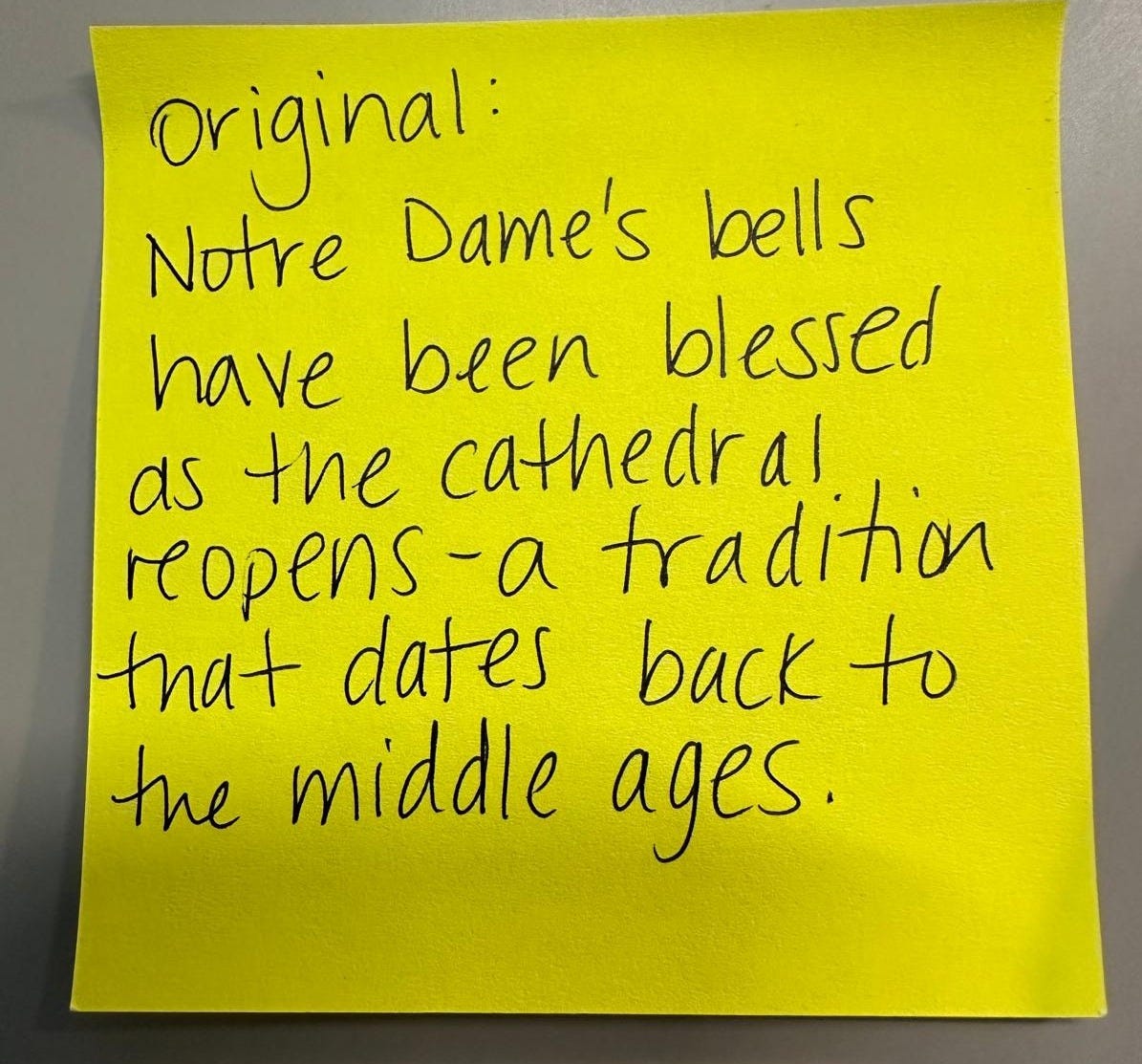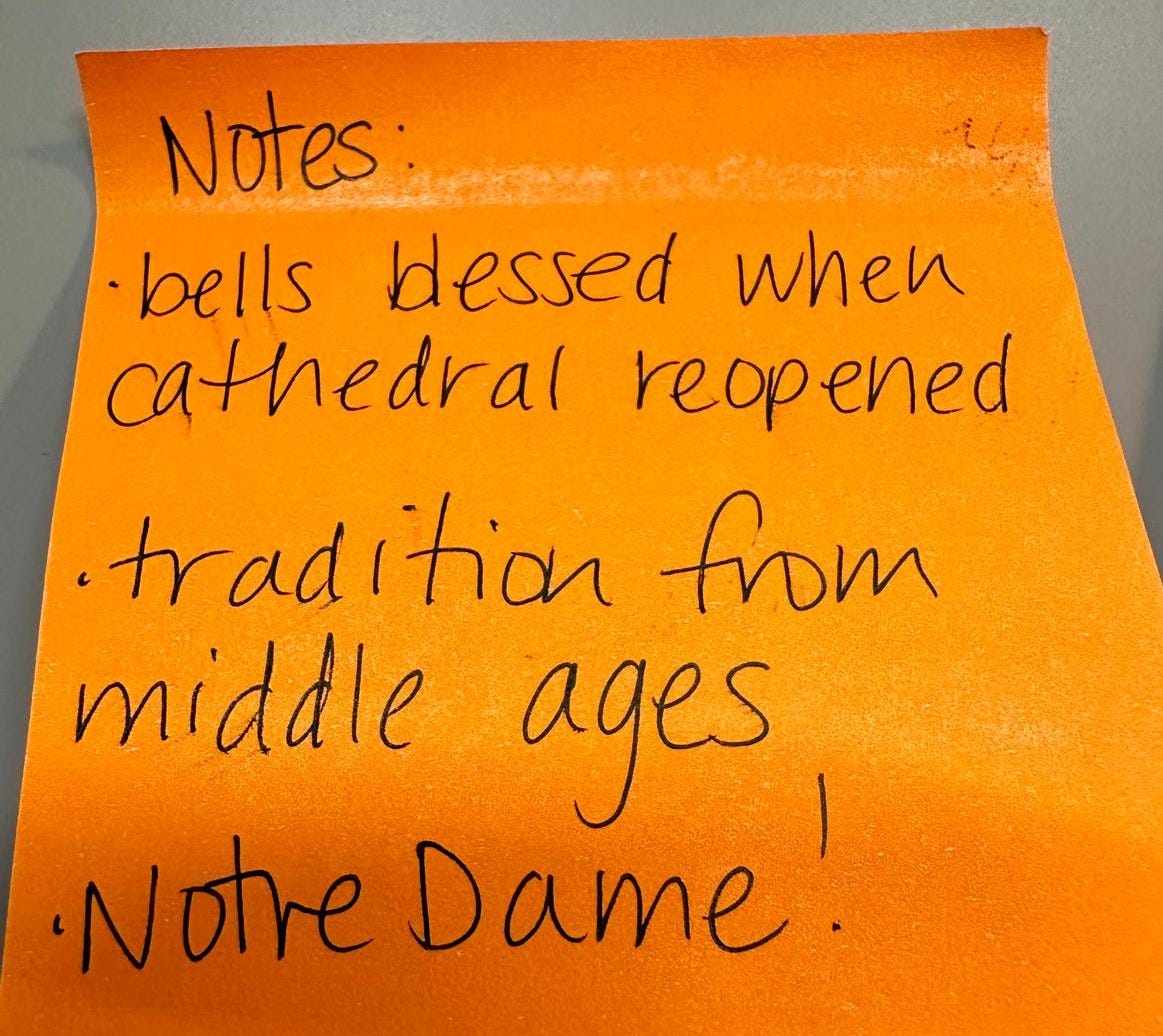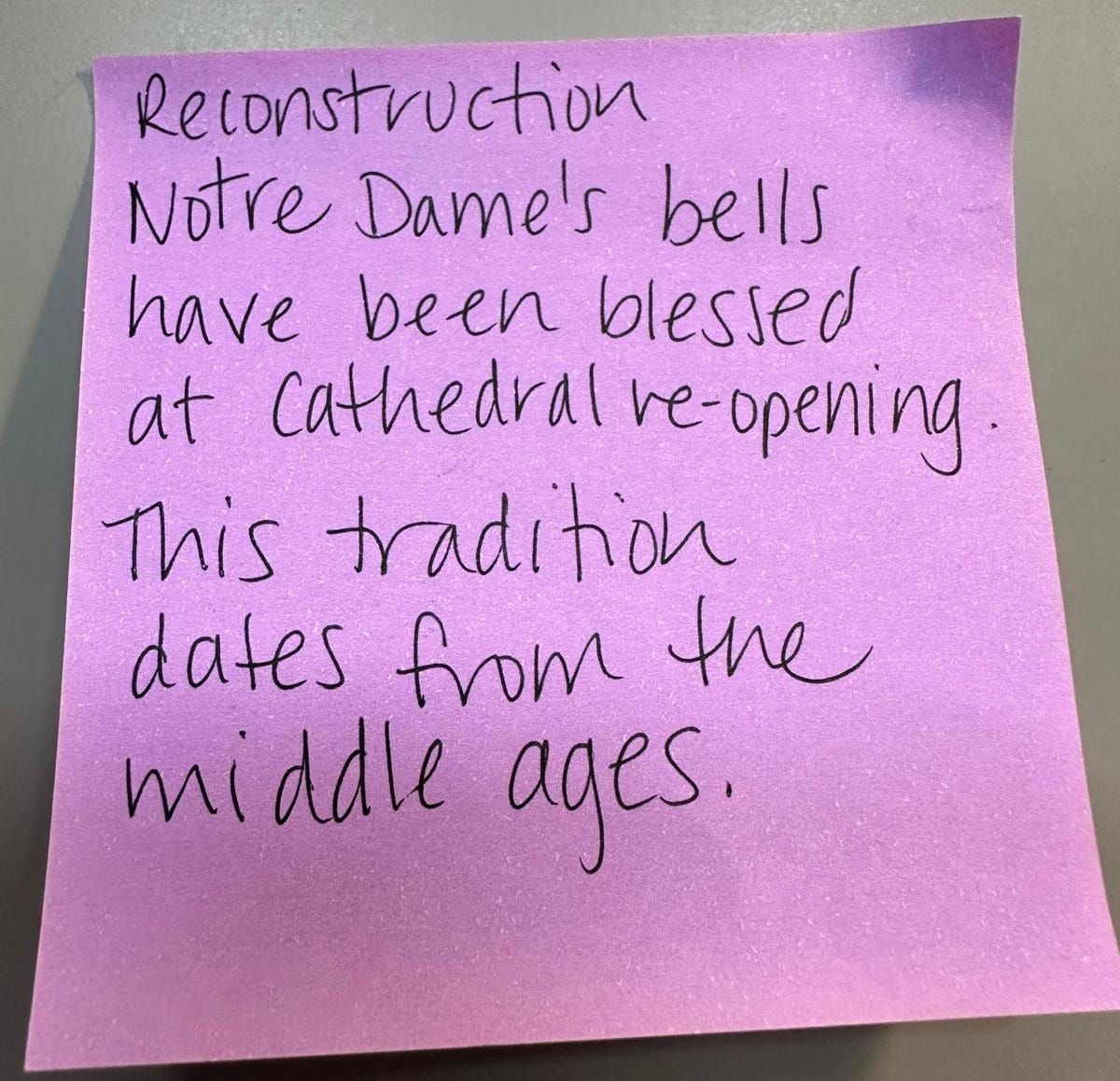This post is part of the series Fresh Foundations which is about helping you create a sustainable and joyful language learning routine. If you subscribe, you’ll get access to the previous posts and receive a new one every weekday in January.
If that sounds like something you’re ready for, let’s get into today’s activity inspired by Ben Franklin.
Ben Franklin’s Technique
Copying expert language users is one of the best ways to improve your language skills. This idea is not new. Benjamin Franklin, yes that Ben Franklin, wrote about it in his autobiography.
Like an artist learning to paint by copying the masters, he practiced reproducing stretches of text he liked so he could improve his writing skills.
Here’s how he described it:
I took some of the papers, and, making short hints of the sentiment in each sentence, laid them by a few days, and then, without looking at the book, try’d to compleat the papers again, by expressing each hinted sentiment at length, and as fully as it had been expressed before, in any suitable words that should come to hand.
Basically, he took notes on sentences that he liked and tried to reconstruct the sentence from his notes.
Then I compared my Spectator with the original, discovered some of my faults, and corrected them. But I found I wanted a stock of words, or a readiness in recollecting and using them.
Then, he compared his version with the original, looked for differences and repeated the process until he was happy with it.
By imitating a style of writing he liked, he was able to improve his writing in English (his first language) but you use the same technique to improve your grammar, vocabulary and sentence structure in your target language.
The Steps
Here is how Franklin’s technique works:
Choose a Sentence You Like Franklin chose articles or essays he admired. Find a sentence or couple of sentences that you want to imitate. Look for it in any text that interests you, such as a newspaper article, a poem, a story, a blog post, or a podcast transcript. The most important thing is to choose something you enjoy and find useful. I often choose headlines or introductory sentences from news publications. Make sure you fully understand the meaning of the sentence.
Here’s an example in English from this article.
Take Notes Take notes on the main words or phrases in the sentence.
Take a Break This step is very important. Leave the text and your notes for some time. It could be a day, a week, or longer. This will help your brain stop relying on memory when you try to recreate the text.
Recreate the Text Use your notes to rewrite the text in your own words. Focus on using new words or grammar you want to practice. Don’t worry about making mistakes. The goal is to try.
Compare and Edit When you finish your version, compare it to the original. Ask yourself:
What is different between my text and the original?
Are there any mistakes in grammar or vocabulary?
How can I make my version better? Then, edit your text. You can repeat this step until you feel your version is as good as it can be.
You can see that my reconstruction is different from the original, despite the fact that English is my first language and I only took a 30 minute break when creating this example.
Why This Works
It’s surprising how much you can learn from a very short bit of text. For example, by trying to imitate a very short introduction to an article I learned and activated chunks of language like:
prendre en compte = take into account
points de repère= reference points
se qui se joue= what’s at stake
This method is very effective because it uses important ideas from language learning:
Noticing New Language: When you compare your version to the original, you notice new words and grammar. This helps you learn and remember them better.
Input and Output: Good language learning combines input (reading or listening) with output (writing or speaking). This method helps you practice both.
Active Recall: Research shows that trying to remember information helps you learn it. When you recreate the text, you use active recall, which makes your learning stronger.
Focus on Form: This method helps you focus on grammar, vocabulary, and sentence structure. This makes it easier to use these correctly in the future.
Today’s Task
Follow the steps above and try Ben Franklin’s technique. Don’t forget to leave a comment and let us know it goes!
Tomorrow, we’re going to summarize different ways to activate your passive grammar and vocabulary knowledge and at the end of the week, you’ll get a tool to design your own language practice routine. Don’t forget to subscribe so you don’t miss it!










Excellent! I read Franklin's autobiography years ago and I think it's time for a reread. So many nuggets and so much wisdom to be found, and this technique is wonderful. It can be applied to speaking as well. I used to do an activity where students made a 3 x 3 grid (like for Tic Tac Toe/Noughts & Crosses) and in each square had to write down a key vocab word or collocation (I loved doing this with phrasal verbs) and using those words only they had to reconstruct or summarise the story to a partner. This can also be done on your own.
(btw, another classic, underrated Franklin book is 'Fart Proudly' - no need to comment! 🤣)
What a brilliant exercise. The active recall element - so effective